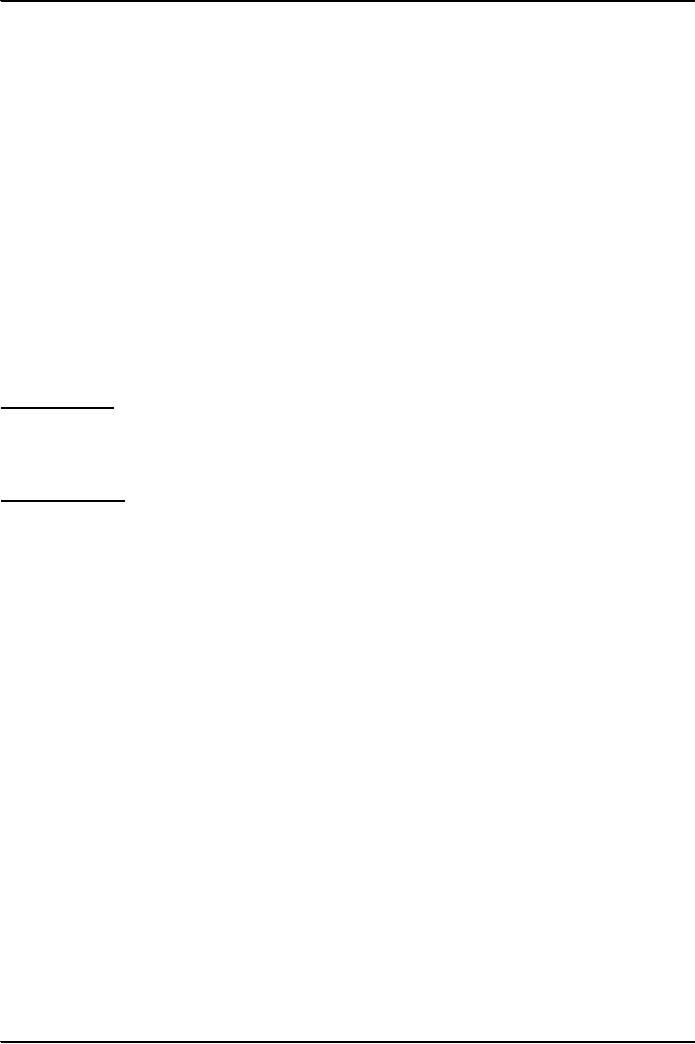 |

Introduction
to Sociology SOC101
VU
Lesson
15
SOCIALIZATION
AND THE LIFE COURSE
Life
course is a biological process. In this
process there is a personal
change from infancy through
old age
and
death brought about as a result of the
interaction between biographical events
and social events.
The
series
of major events, the stages of our
lives from birth to death,
may be called life
course. Movement
through
life course is marked by a
succession of stages by
age.
Analysts
have tried to depict the typical stages
through which we pass, but
they have not been able to
agree
on
standard division of the life
course. As such life course
is biological process, which
has been divided
into
four distinct stages:
childhood, adolescence, adulthood,
and old age.
Life
course stages present
characteristic problems and transitions
that require learning new and
unlearning
familiar
routines. Through the process of
socialization society tries to
prepare its members for
taking up
the
roles and statuses
associated with life course
stages.
Each
life course stage by age is
also affected by other
factors like social class,
gender, ethnicity and
human
experience.
People's
life experiences also vary depending on
when, in the history of society, they
were born. Some
specific
historical events like the creation of
Pakistan, terrorist attacks of
9/11, economic
prosperity/depression,
war, or some other natural calamity
(an earthquake, epidemic,
and flood) may
become
significant in the personal development of individuals
as well as their attitudes toward
life and other
people.
Although
childhood has special importance in the
socialization process, learning continues
throughout our
lives.
An overview of the life course
reveals that our society
organizes human experience
according to age
childhood,
adolescence, adulthood, and
old age.
CHILDHOOD
Childhood
usually covers the first 12
years of life: time for learning
and carefree play.
Nevertheless, what a
child
"is" differs from one
culture to another. Presently we defend
our idea of childhood
because children
are
biologically immature. But a
look back in time and around the
world shows that the
concept
of childhood is
rooted
in culture.
The
concept of childhood as such is of
recent origin, which appears
to be more pronounced in the
developed
countries compared with the developing
countries. Even in the developed
countries, say a
couple
of centuries back, children of
four or five years were
treated like adults and
expected to earn for
themselves.
A century back, children in USA,
Canada, and Europe had
much the same life as
children in
poor
countries. That is how we
come across the issue of
child labor, which is
associated with the
developing
countries.
Children
in lower class have always
assumed adult responsibilities sooner
than their other class
counterparts.
Due
to the demands of the circumstances
children in the lower class
start earning earlier than the
children
in
other classes. Their
childhood finishes too
quickly and may be their
childhood remains
invisible.
In
childhood an individual is made to
learn the skills needed in
adult life.
ADOLESCENCE
Just
as industrialization helped create
childhood as a distinct stage of
life, adolescence emerged as a
buffer
between
childhood and adulthood. In
earlier times, and in
Pakistani society even
today, societies did
not
mark
out adolescence as distinct time of
life. People simply moved from
childhood into young
adulthood
with
no stopover in between. Adolescence
usually overlaps teen age
though it is also a social
construction.
37

Introduction
to Sociology SOC101
VU
We
generally link adolescence, or
teenage years, to emotional
and social turmoil, when the
youth try to
develop
their own individual identities. As they
try to carve out an identity
distinct from both the
"younger"
world
being left behind and the
"older" world still be out
of their range, adolescents develop a
subculture of
their
own. Again we attribute
teenage turbulence to the biological
changes of puberty. Adolescence is
more
a
phenomenon of industrial societies.
Although these outward
patterns are readily visible, we usually
fail to
realize
that adolescence is a social
creation; it is contemporary industrial
society, not biological age
that
makes
these years a period of
turmoil. In these emotional
and social spheres the young people
appear to be
in
conflict with their
parents.
Establishing
some independence and learning
specialized skills for adult
life.
.
Adulthood
again depends on culture, and
accordingly there could be a smooth or
difficult change from
childhood
to adolescence. The 18 years
old may have different
statuses and roles in
Pakistani society.
They
have
the voting rights, they can
get an ID card, they can get
a driving lenience, and they
work in offices.
ADULTHOOD
Adulthood,
which begins between the
late teens and the early
thirties, depending on the social background,
is
a time for accomplishment. They pursue
careers and raise families.
These youth embark on
careers and
raise
families of their own. They reflect on
their own achievements---Did the dreams
come true?
Early
Adulthood: It covers the period
from 20 to about 40 years, and
during this period personalities
are
formed.
They learn to manage the day-to-day responsibilities
personally. They try to make an
adjustment
with
spouse, and bring up their
children in their own way.
They often have many
conflicting priorities:
parents,
partner, children, schooling, and
work.
Middle
Adulthood: Roughly covers the period
from 40 to 60 yrs. During this
period the individuals
assess
actual
achievements in view of their
earlier expectations.
Children
are grown up.
Growing
older means facing physical
decline. During the late
middle years (50 to 65
years), people attempt
to
evaluate the past and come
to terms with what lies
ahead. They compare what they have
accomplished
with
how far they had hoped to
get.
During
this time of life, many people find
themselves caring for their
own children and also
their aging
parents.
Health and mortality also
begin to loom large. People feel
physical changes in their
bodies, and
they
may watch their parents
become frail, ill and
die.
OLD
AGE
Old
age the later
years of adulthood and the
final stage of life itself
begins about the mid
sixties. The
societies
attach different meaning to this
stage of life. Pakistani
society often gives older
people control
over
most of the land and other
wealth. Since the rate of
change in Pakistani society is
not very fast, older
people
amass great wisdom during
their lifetime, which earns
them much respect. On the other hand
in
industrial
societies old are considered
as conservative, unimportant, obsolete.
In a fast changing
society
their
knowledge appears to be irrelevant.
Old
age differs in an important
way from earlier stages in
life course. Growing up
typically means entering
new
roles and assuming new
responsibilities; growing old, by
contrast, is the opposite experience
leaving
roles
that provided both
satisfaction and social
identity. Like any
life transition, retirement
from
employment
or even the handing over of the personal
business to one's heirs,
demands learning new,
different
patterns while at the same time
unlearning familiar habits from the
past.
38

Introduction
to Sociology SOC101
VU
This
survey of the life course
leads us to two major conclusions. First,
although each stage of life
is linked
to
the biological process of aging, the
life course is largely a
social construction. For this reason,
people in
other
societies may experience a
stage of life quite
differently, or for that matter, they
may not recognize it
at
all. Second, in any society, the
stages of life course
present characteristic problems
and transitions that
involve
learning something new and, in
many cases unlearning familiar
routines.
Societies
organize the life course
according to age; other
forces, such as social
class, ethnicity, and
gender,
also
shape their lives. Thus the
general pattern that has
been described earlier, apply somewhat
differently
to
various categories of
people.
Assignment:
Childhood
is a social construction. More so it is a creation of
an industrial society. Pakistani
society is also
experiencing
the issue of child
labor.
What
do you understand by childhood in
Pakistani society? Why has it
become an issue?
Tips
for handling this assignment: [Not
for transmittal to the
students]
Who
is a child? Is he or she under 12 years?
How do we in Pakistani society
determine childhood
period?
This
period could be different from
one social class to another or
from one ethnic group to
another.
In
the lower class children
start taking adult responsibilities
earlier than in a middle
class. In the lower
class
they
start following their
parents' occupation or they are employed
as early as 10 years and
start earning. In
Pakistan
as well as in the industrial countries,
human rights activists have
started calling it as child
labor.
Why?
Childhood
is usually considered as time for
learning and carefree play. Children at
this age are
biologically
immature.
They are to be provided educational
opportunities for their development.
Education is being
considered
as their basic human right.
In stead of sending them to school, if we
employ them for earning, it
may
be considered as human rights violation,
hence it is referred to as child
labor.
But
when we look back in time
and around the world, we see that
the
concept of childhood is rooted in
culture.
In
Pakistan children are put to
work at a very young age. This observation is
highly applicable to the
lower
class
families because it is part of the
culture of poor people. Due to the
demands of their
circumstances
children
in the lower class assume
adult responsibilities sooner than
their other class
counterparts. Their
childhood
finishes too quickly. Even
for labor force calculations, the
age is 10 years and
above.
Children
in the past, even in the developed
countries, had much the same
life course as children in the
poor
countries.
39
Table of Contents:
- THE ORIGINS OF SOCIOLOGY:Auguste Comte, The Fields of Sociology
- THE SOCIOLOGICAL PERSPECTIVE:Society affects what we do
- THEORETICAL PARADIGMS:Salient Paradigms, Critical Evaluation
- SOCIOLOGY AS SCIENCE:Empirical, Verifiable, Cumulative, Self-Correcting
- STEPS IN SOCIOLOGICAL INVESTIGATION:Exploration/Consultation
- SOCIAL INTERACTION:Social Status, ROLE, The Social Construction of Reality
- SOCIAL GROUPS:Primary and Secondary Groups, Reference Group, Networks
- ORGANIZATIONS:Utilitarian Organizations, Coercive Organizations
- CULTURE:Universality, Components of Culture, Symbols, Language
- CULTURE (continued):Beliefs, Norms, Cultural Diversity
- CULTURE (continued):Culture by social class, Multiculturalism, Cultural Lag
- SOCIALIZATION: HUMAN DEVELOPMENT, NATURE, Social Isolation
- UNDERSTANDING THE SOCIALIZATION PROCESS
- AGENTS OF SOCIALIZATION:The Family, The School, Peer Groups, The Mass Media
- SOCIALIZATION AND THE LIFE COURSE:CHILDHOOD, ADOLESCENCE
- SOCIAL CONTROL AND DEVIANCE:Crime, Deviants, Stigma, Labeling
- THE SOCIAL FOUNDATIONS OF DEVIANCE:Cultural relativity of deviance
- EXPLANATIONS OF CRIME:Sociological explanations
- EXPLANATIONS OF CRIME -- CONTINUED:White-Collar Crime, Conflict Theory
- SOCIAL DISTRIBUTION OF CRIME: EXPLANATIONS, Gender and Crime
- SOCIAL STRATIFICATION: INTRODUCTION AND SIGNIFICANCE
- THEORIES OF CLASS AND STRATIFICATION – I:Critical evaluation
- THEORIES OF SOCIAL CLASS AND STRATIFICATION – II
- THEORIES OF CLASS AND SOCIAL STRATIFICATION – III
- SOCIAL CLASS AS SUBCULTURE
- SOCIAL MOBILITY:Structural factors, Individual factors, Costs
- THE FAMILY: GLOBAL VARIETY, Marriage Patterns, Patterns of Descent
- FUNCTIONS OF FAMILY:Reproduction, Social placement
- FAMILY AND MARRIAGE IN TRANSITION:Family is losing functions
- GENDER: A SOCIAL CONSTRUCTION, Gender socialization
- GENDER SOCIALIZATION:Role of family, Gender Stratification
- EXPLANATIONS OF GENDER INEQUALITY:Conflict Explanations, Feminism
- FUNCTIONS OF SCHOOLING:Cultural Innovation, School Tracking
- ISSUES IN EDUCATION:Low Enrollment, High Dropout, Gender Disparity
- POPULATION STUDY AND ITS SIGNIFICANCE:Crude Birth Rate
- THEORY OF POPULATION GROWTH:Theory of Demographic Transition
- POPULATION PROFILE OF PAKISTAN:World Population Growth
- POPULATION PROFILE OF PAKISTAN (Continued):Age Distribution, Sex Composition
- IMPLICAIONS OF POPULATION GOWTH:Additional GDP needed per year
- POPULATION POLICY:Goals of Population Policy, Objectives, Strategies
- ENVIRONMENT AND SOCIETY:Global Dimension, Historical Dimension
- ENVIRONMENTAL ISSUES:Preserving Clean Water, Clearing the Air
- SOCIAL CHANGE:Social change is controversial.
- CAUSES OF SOCIAL CHANGE:Culture and Change, Conflict and Change, Modernization
- MODERNITY AND POST MODERNITY:Cultural Patterns, Post-modernity